Supermicro SYS-221H-TNR Block Diagram and Topology
Here is the block diagram for the server that can help one understand all of the cabling and where the PCIe lanes or other I/O is routed.
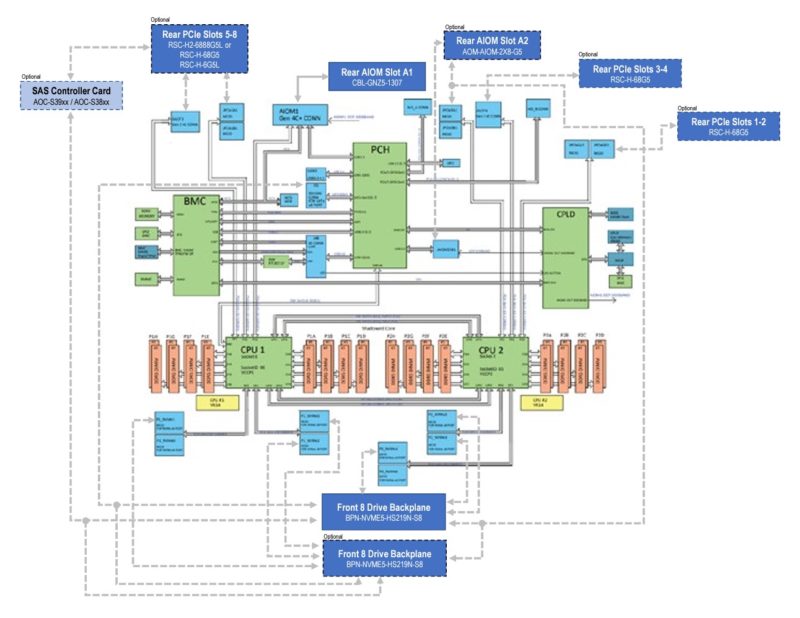
Here is what the system looked like with our two Intel Xeon CPUs, each with 256GB of memory.
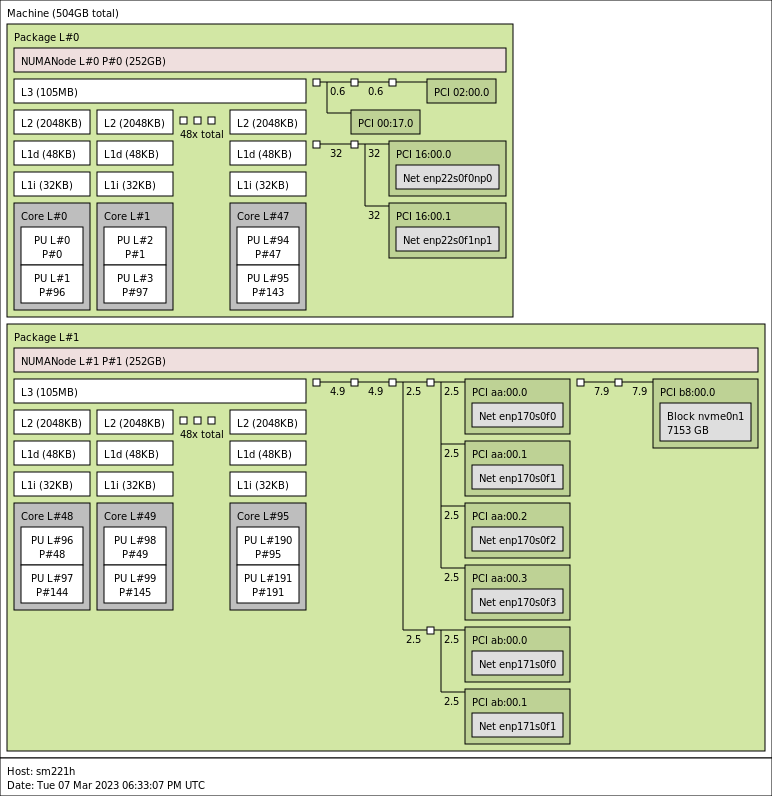
One can see that we have the Broadcom OCP NIC 3.0 on CPU0 and the Silicom i350 card as well as the NVMe storage on CPU1.
Supermicro SYS-221H-TNR Management
This is one of Supermicro’s X13 generation platforms. As such, it is using the newer ASPEED AST2600 BMC. That means we get an updated Supermicro IPMI management interface (and Redfish API) solution versus what we saw on the older generation platforms.
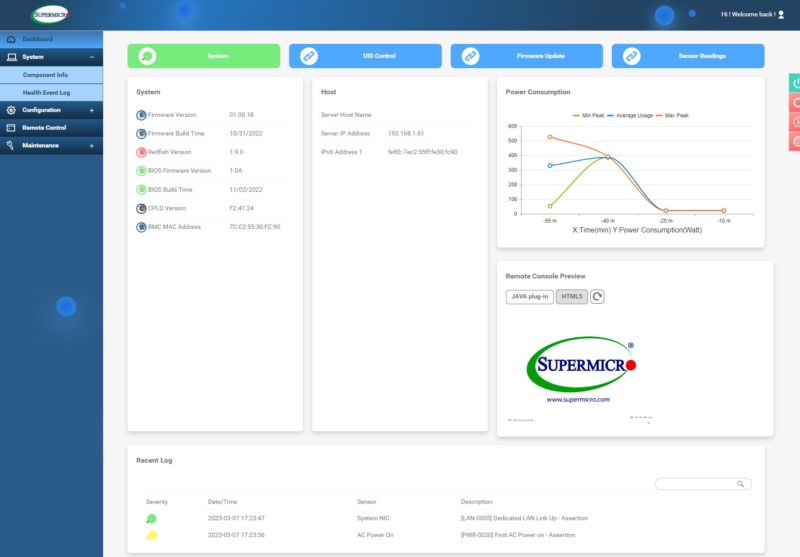
That includes features like HTML5 iKVM functionality that can be used to install OSes and troubleshoot remotely.
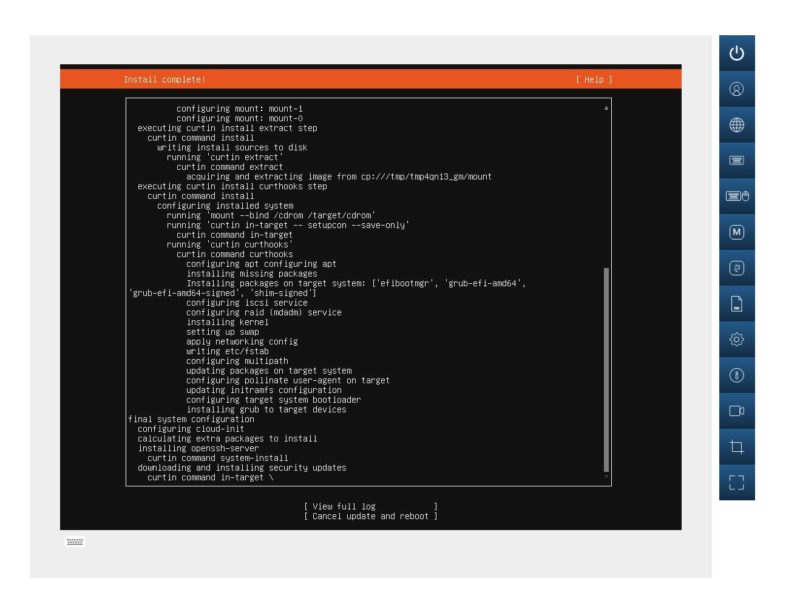
One change that we highlighted recently is that with the HTML5 iKVM, one now needs a license to remote mount media directly when using this solution. We discuss other ways to mount media in the new era of Supermicro management in How to Add Virtual Media to a Supermicro Server via HTML5 iKVM Web IPMI Interface.
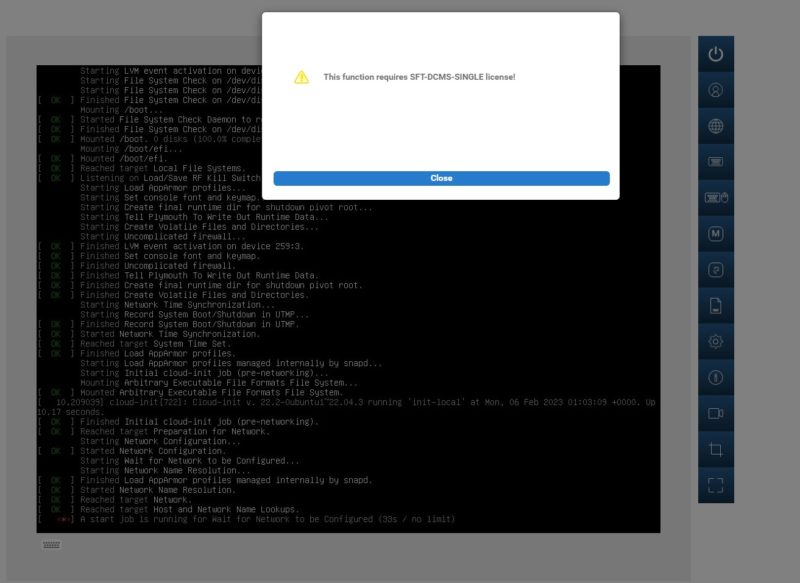
Aside from what is on the motherboard, Supermicro has a number of other tools to help manage its platforms.
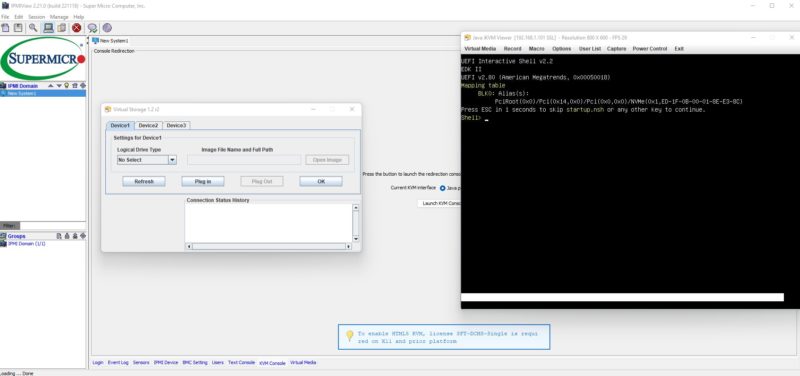
The BMC password is on the front tag. You can learn more about why this is required so the old ADMIN/ ADMIN credentials will not work in Why Your Favorite Default Passwords Are Changing.
Next, let us get to the performance.
Supermicro SYS-221H-TNR Performance
Since we are reviewing the server and not the Intel Xeon Platinum 8468 performance, we wanted to give a sense of how the system performed compared to Intel’s reference platform. The chips are very high-end at 350W. In many servers, we would see thermal throttling, especially if cooling was insufficient. Here is what we saw:
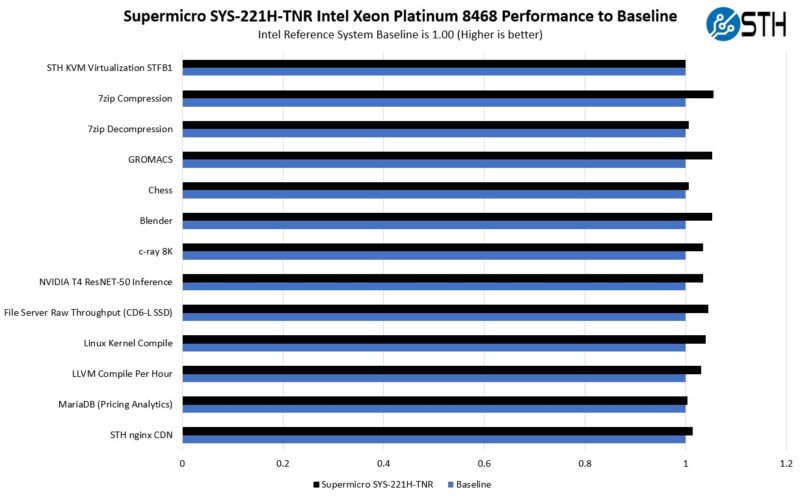
Overall, the performance of this server was very good. Often when we review servers we will see some areas below the baseline, and others over. The only result that matched our baseline was the KVM virtualization test, but that is a SLA-driven workload limited by the number of VMs that can be run simultaneously. CPUs tend to have the same result in different platforms there since it usually requires a significant performance step to handle another VM. This is an extremely strong result.
Next, let us get to the system’s power consumption.




That looks beautiful. I’m just worried that Supermicro’s trying to be HPE instead of continuing to be the classic SMC
I’m curious if the chassis can fit consumer GPUs like the 4090 or 4080. RTX 6000 Ada/L40 pricing has forced a second look at consumer GPUs for ML workloads and figuring out which — if any — Supermicro systems can physically accommodate them has not been easy.
@ssnseawolf I’ve been building these up for Intel for the past year. They will accept the Arctic Sound/Flex GPU but that’s it.
STH level of detail: Let’s show everyone the new pop up pull tab
“DDR?-4800 memory modules” ??
I wonder if the SSDs get any cooling at all. With there being low-drag open grilles on both sides of the faceplace there is no reason for the air to be sucked through the high-drag SSD cage.
So bad they’re heading where HP already is – one-time use proprietary-everything server, going to trash after 5 years. Most of SM fans loved them for being conservative and standardized. Those plastic pins in toolless trays and tabs are weak and cracks in no time. X10-X11 and maybe H11-H12 probably were the last customisable server systems.
Another great article. And just jealous of all the amazing toys you get to review/play with :) Small textual correction, page 2 : “Instead of slots for PCIe risers, instead the PCIe risers are cabled as are the front drive bays.” I might be tired but somehow my brain can’t read this correctly.